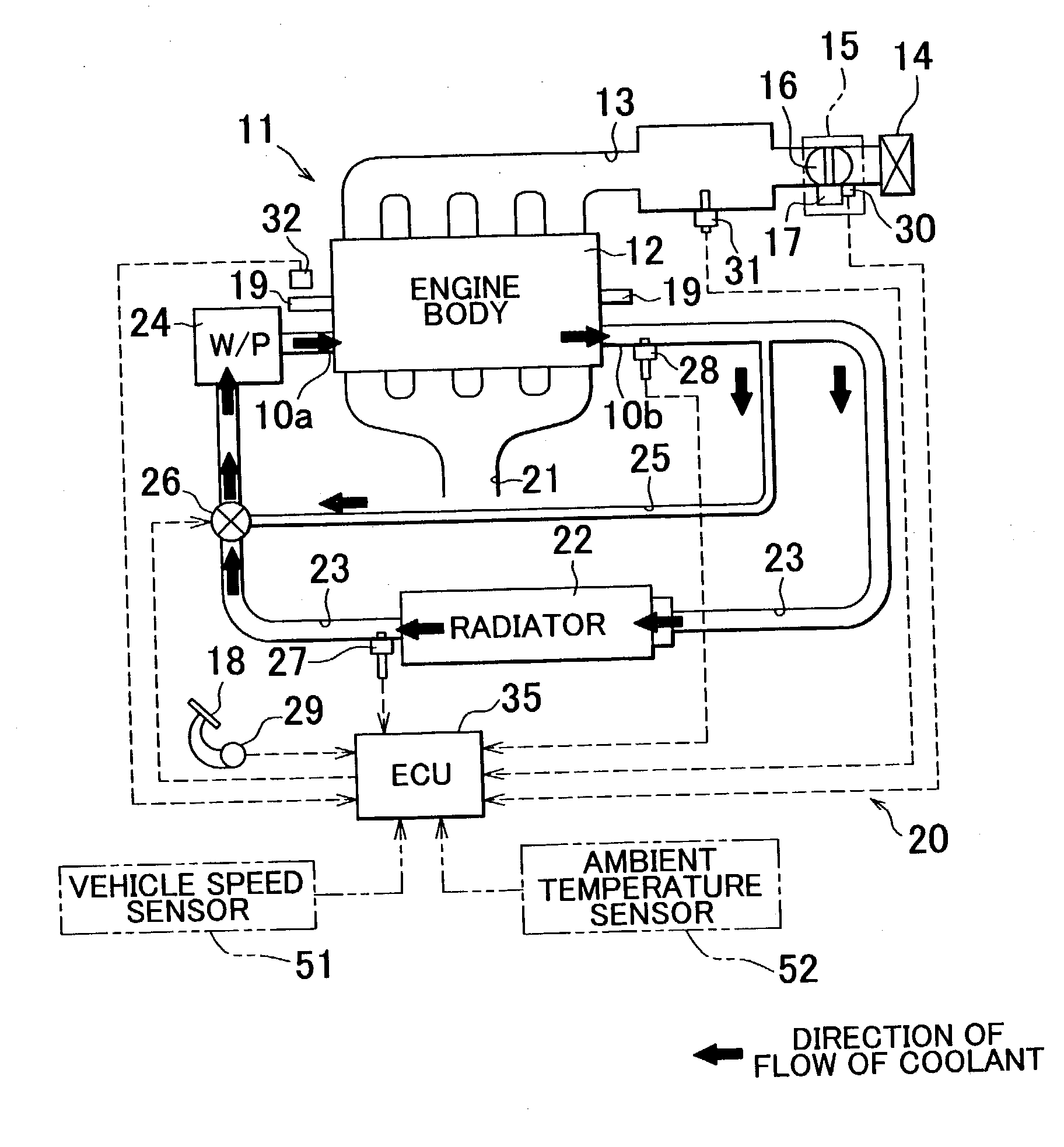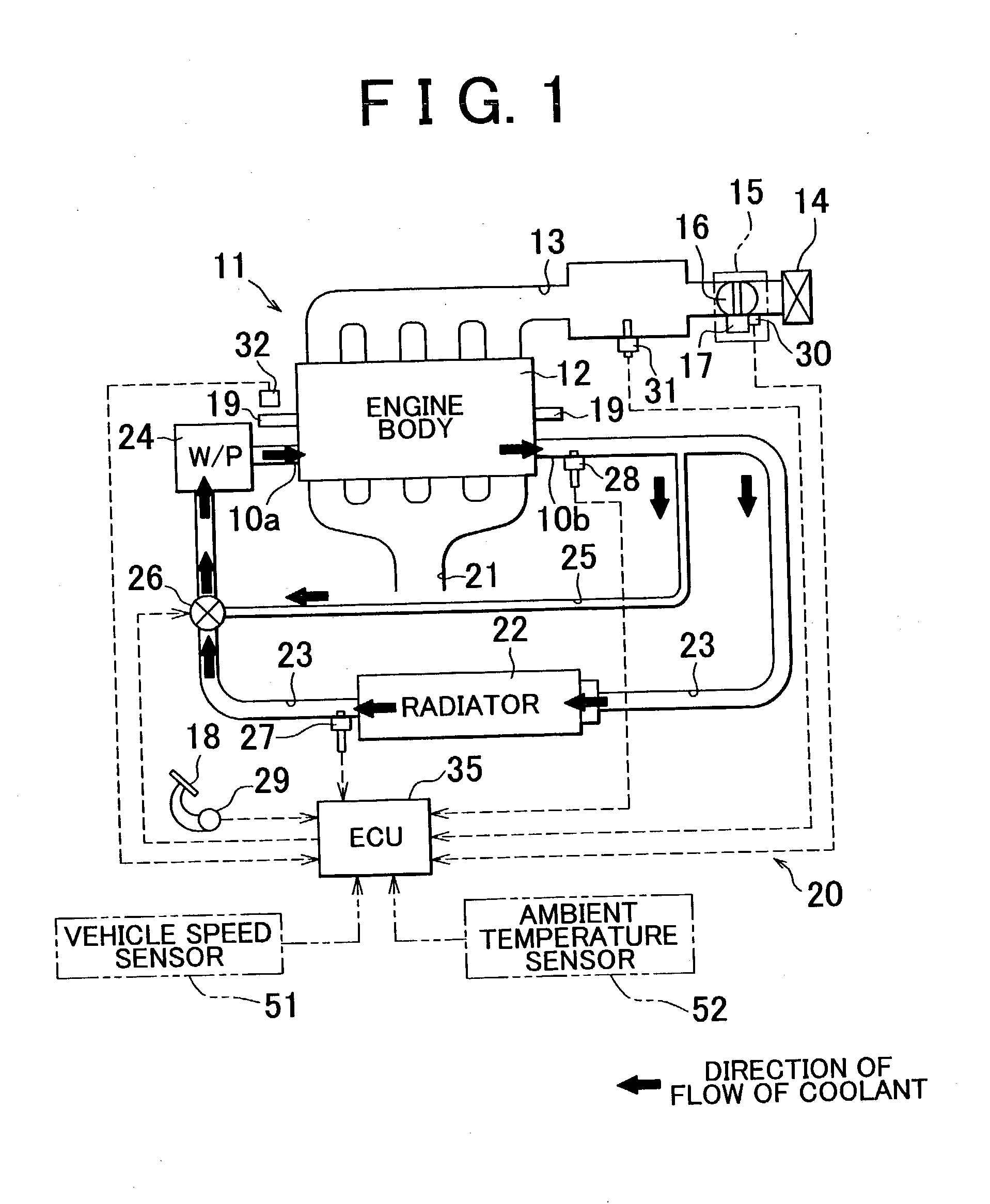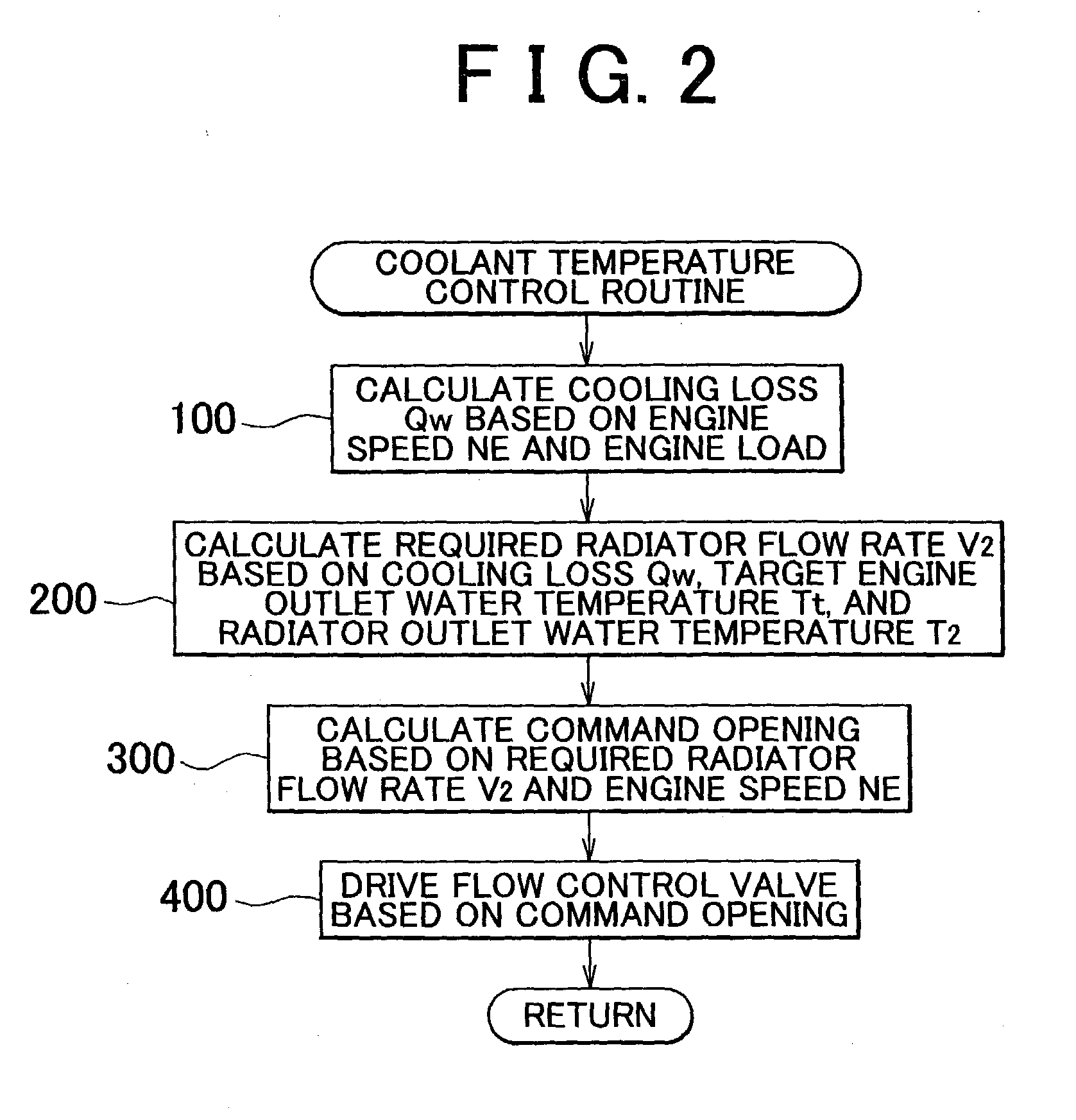Cooling system for internal combustion engine
a technology for internal combustion engines and cooling systems, which is applied in the direction of engine cooling apparatus, electric control, machines/engines, etc., can solve the problems of power loss, poor response of cooling systems, and inability to control the coolant temperature to the target coolant temperature, etc., to achieve the effect of improving fuel efficiency and output performance improvement, and reducing power loss
- Summary
- Abstract
- Description
- Claims
- Application Information
AI Technical Summary
Benefits of technology
Problems solved by technology
Method used
Image
Examples
first embodiment
[0035] First Embodiment
[0036] A first embodiment of the invention will be described in detail with reference to FIG. 1 through FIG. 4.
[0037] As shown in FIG. 1, a principal part of a multi-cylinder engine installed on a motor vehicle consists of an engine body 12 including a cylinder block, a cylinder head and other components. To the engine body 12 is connected an intake passage 13 through which the air is introduced into a combustion chamber of each cylinder. The intake passage 13 is provided with an air cleaner 14 and a throttle body 15. The air cleaner 14 is a filter that traps and removes dust in the air introduced into the engine body 12. A throttle valve 16 is rotatably supported in the throttle body 15, and a throttle motor 17 for driving the throttle valve 16 is operatively coupled to the throttle valve 16.
[0038] An electronic control unit (ECU) 35 controls the throttle motor 17 as described later, based on an operation of the driver to depress an accelerator pedal 18 and o...
second embodiment
[0061] Second Embodiment
[0062] Next, a second embodiment of the invention will be described in detail with reference to FIG. 5 through FIG. 7. In the second embodiment, a plurality of heat receiving / radiating circuits that bypass the radiator 22 are provided in addition to the bypass passage 25. With this arrangement, the quantity of heat received or radiated in each of the heat receiving / radiating circuits is calculated, and the obtained quantity of heat is reflected in the calculation of the required radiator flow rate V2. The second embodiment is mainly different from the first embodiment in these respects. These differences will be now explained in detail.
[0063] In the second embodiment, a heater circuit 36, a throttle body hot water circuit 37, an EGR cooler circuit 38, a hydraulic oil warmer (transmission oil cooler) circuit 39 for an automatic transmission, and a hot air intake circuit 40 of hot water heating type are provided as heat receiving / radiating circuits, as shown in...
third embodiment
[0084] Third Embodiment
[0085] Next, a third embodiment of the invention will be described with reference to FIG. 1 and FIGS. 8-10. In the third embodiment, a vehicle speed sensor 51 for measuring the vehicle speed SPD as a running speed of the vehicle and an ambient temperature sensor 52 for measuring the ambient air temperature THA are added to the system for detecting the operating state of the vehicle, as indicated by two-dot chain lines in FIG. 1. With the sensors 51, 52 thus added, the processing performed by the ECU 35 in the third embodiment is different from that of the first embodiment.
[0086] In the following, a coolant temperature control routine to be executed by the ECU 35 will be described with reference to the flowchart of FIG. 10. The coolant temperature control routine of this embodiment is different from that of the first embodiment in terms of an operation to calculate the required radiator flow rate V2. Since the other operations of the routine of FIG. 10 are subs...
PUM
 Login to View More
Login to View More Abstract
Description
Claims
Application Information
 Login to View More
Login to View More - R&D
- Intellectual Property
- Life Sciences
- Materials
- Tech Scout
- Unparalleled Data Quality
- Higher Quality Content
- 60% Fewer Hallucinations
Browse by: Latest US Patents, China's latest patents, Technical Efficacy Thesaurus, Application Domain, Technology Topic, Popular Technical Reports.
© 2025 PatSnap. All rights reserved.Legal|Privacy policy|Modern Slavery Act Transparency Statement|Sitemap|About US| Contact US: help@patsnap.com



